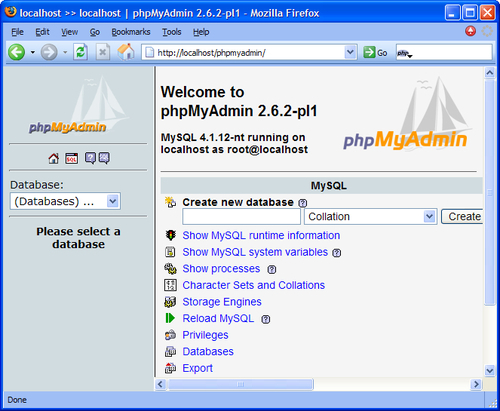We'll be using the phpMyAdmin tool to do our database work. phpMyAdmin is part of the XAMPP installation (detailed in Appendix A), or can be downloaded from www.phpmyadmin.net, if you don't already have it. phpMyAdmin provides a powerful web interface for working with your MySQL databases.
First of all, open your browser and navigate to http://localhost/phpmyadmin/, or whatever the location of your phpMyAdmin installation is:

We need to create an empty database for PHP-Nuke to hold all the data about our site. To do this, we simply enter a name for our database into the Create new database textbox:

We will call our database nuke. Enter this, and click the Create button. The name you give doesn't particularly matter, as long as it is not the name of some already existing database. If you try to use the same name as an already existing database, phpMyAdmin will inform you of this, and no action will be taken. The exact name isn't particularly...



